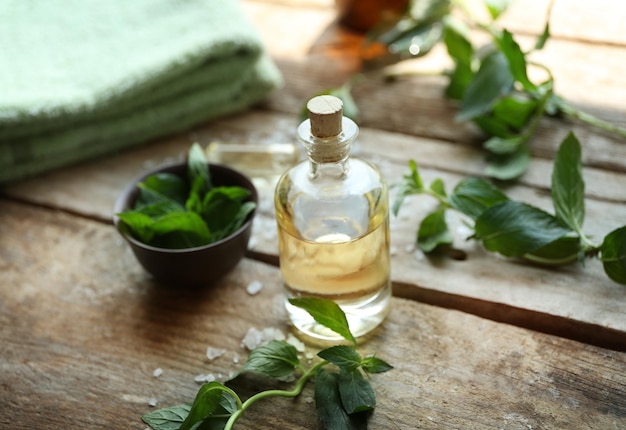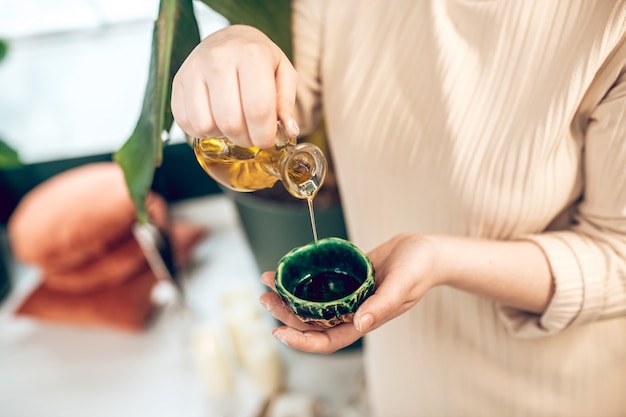Ask Ayurvedic doctor a question and get a consultation online on the problem of your concern in a free or paid mode. More than 2,000 experienced doctors work and wait for your questions on our site and help users to solve their health problems every day.
Shop Now in Our Store
Himasagara Taila: A Comprehensive, Evidence-Based Overview

Imagine an ancient Ayurvedic formulation so prized for its soothing properties that modern researchers are beginning to take notice. That formulation is Himasagara Taila, an herbal oil blend historically cherished in certain traditions of Ayurveda for promoting holistic well-being. While Ayurvedic practices are centuries old, modern healthcare experts have recently turned their attention to these remedies, seeking to uncover both their benefits and potential limitations. In this comprehensive guide, we will delve into the science, usage, and evidence behind Himasagara Taila, providing you with a well-rounded, research-based perspective.
Disclaimer: The information in this article is for educational purposes only. It should not replace professional medical advice, diagnosis, or treatment. Always consult with a qualified healthcare provider before using any new healthcare product.
Table of Contents
- What is Himasagara Taila?
- The Ayurvedic Perspective
- Modern Research & Scientific Evidence
- Potential Benefits of Himasagara Taila
- How to Use Himasagara Taila: Practical Tips
- Safety Considerations & Precautions
- Frequently Asked Questions (FAQ)
- Conclusion & Call to Action
What is Himasagara Taila?
Himasagara Taila is a specialized herbal oil (taila literally means “oil” in Sanskrit) formulated through classical Ayurvedic processes. While specific recipes can vary, many formulations include a base oil—commonly sesame oil—infused with a blend of cooling herbs and other botanical extracts traditionally believed to support skin health, musculoskeletal relaxation, and systemic balance.
Key Characteristics
- Base Oil: Usually sesame or coconut oil, chosen for its skin-friendly properties.
- Herbal Infusions: Blends of herbs like sandalwood, vetiver, or other cooling botanicals (depending on the recipe and regional variations).
- Preparation Method: Traditionally made through a process of boiling or slow-cooking herbs in the carrier oil, allowing active constituents to permeate.
From an Ayurvedic standpoint, Himasagara Taila is often prized for its “cooling” effect. The term “Hima” in Sanskrit relates to coldness, suggesting that this oil is designed to offset any excess heat or pitta imbalance in the body.
The Ayurvedic Perspective
The Three Doshas
In Ayurveda, the body is conceptualized according to three fundamental energies—or Doshas:
- Vata (air and space)
- Pitta (fire and water)
- Kapha (earth and water)
Imbalances among these doshas are believed to lead to various ailments. Himasagara Taila is typically recommended to balance Pitta, especially when individuals experience issues such as excessive heat, inflammation, or irritability.
Traditional Uses
- Abhyanga (Massage): Himasagara Taila is often utilized for daily self-massage or professional Ayurvedic massage, supporting relaxation and cooling.
- Pitta-Related Complaints: Some Ayurvedic practitioners apply Himasagara Taila for conditions attributed to Pitta imbalance—like certain skin irritations or stress.
- Ritual & Routine: Beyond medical usage, it may also be used in certain rituals, reflecting the holistic approach of Ayurveda where mind, body, and spirit care are intertwined.
Expert Consensus: While there is a wealth of anecdotal evidence and traditional Ayurvedic texts (like the Charaka Samhita and Sushruta Samhita) documenting the efficacy of herbal oils, modern clinical data on Himasagara Taila specifically remain relatively limited. However, the growing interest in integrative medicine suggests more scientific evaluations may be forthcoming.
Modern Research & Scientific Evidence
Why Modern Research Matters
Modern research aims to validate, refine, or question traditional practices using systematic methods—randomized controlled trials (RCTs), meta-analyses, and other forms of empirical investigation. This evidence-based approach ensures that treatments are both safe and effective.
Current Studies & Publications
- Preliminary Pharmacological Assessments: Some studies in BMC Complementary Medicine and Therapieshave examined the bioactive compounds in various Ayurvedic oils. These compounds often exhibit antioxidant and anti-inflammatory properties, though the specific focus on Himasagara Taila is still evolving.
- In Vitro Research: Laboratory tests on oils with similar herbal compositions indicate potential thermoregulatoryand antimicrobial effects. However, whether these findings directly apply to Himasagara Taila needs further, targeted exploration.
- Case Reports: A handful of practitioner-led case studies, often published in local Ayurvedic journals, describe successful use of Himasagara Taila for joint discomfort or inflammatory conditions. While promising, these reports typically lack the larger sample sizes and methodological rigor required for definitive conclusions.
Limitations & Gaps
- Lack of Large-Scale Trials: There are few, if any, large-scale, placebo-controlled RCTs on Himasagara Taila.
- Standardization: Ayurvedic formulations can vary widely. The ratio and selection of herbs may differ, making it challenging to generalize findings.
- Biochemical Profiling: More detailed research on the active constituents unique to Himasagara Taila is needed to draw connections between specific compounds and clinical benefits.
Takeaway: Though existing evidence suggests a plausible scientific basis for some of the traditional claims surrounding Himasagara Taila, definitive conclusions await more robust, peer-reviewed research. For the moment, observational and small-scale studies point to a potential role for Himasagara Taila in complementing certain wellness routines.
Potential Benefits of Himasagara Taila
Below are some purported benefits derived from both Ayurvedic principles and limited modern findings. Please note that individual results may vary, and these claims warrant further scientific validation.
-
Skin Health and Cooling Sensation
- The infusion of cooling herbs (e.g., sandalwood, vetiver) may help soothe minor irritations or redness.
- Its antioxidant profile, suggested by preliminary herbal studies, could potentially protect skin cells from oxidative stress.
-
Musculoskeletal Comfort
- Warm oil massages might ease joint stiffness or muscle tension, a principle supported by modern physiotherapy as well.
- A small trial on herbal oils indicated improvements in mobility when paired with gentle exercises.
-
Stress Relief and Relaxation
- Massage in general can lower cortisol (the stress hormone), contributing to overall calm.
- The aromatic components in herbal oils may also offer a therapeutic effect, reminiscent of aromatherapytechniques.
-
Balance of Pitta Dosha
- While more scientific data is needed, Ayurvedic texts maintain that Himasagara Taila helps maintain a harmonious internal climate, potentially alleviating common Pitta imbalances (e.g., heat-induced headaches, irritability).
How to Use Himasagara Taila: Practical Tips
1. Massage (Abhyanga)
- Step 1: Warm the oil. Place the bottle in a bowl of hot water for a few minutes.
- Step 2: Apply gently over the body, focusing on areas prone to stiffness or tension.
- Step 3: Use circular motions around the joints and long strokes along the muscles.
- Step 4: Allow the oil to sit for 15–20 minutes before rinsing or showering.
2. Targeted Application
- Useful for localized discomfort.
- Simply dab a small amount on the affected area, massaging gently.
3. Hair and Scalp Application
- Some formulations of Himasagara Taila may be used for scalp massages to help cool the head and potentially support hair health.
- Leave on for a short while before washing out to prevent residue build-up.
4. Ayurvedic Therapies
- Under professional supervision, Himasagara Taila may be utilized in procedures such as Shirodhara or Pizhichil, though these are more specialized and require trained Ayurvedic practitioners.
Pro Tip: Always perform a patch test when trying a new oil to ensure there are no adverse reactions. Additionally, consult a healthcare provider for personalized guidance.
Safety Considerations & Precautions
-
Allergic Reactions
- Individuals with nut or seed allergies should verify the carrier oil used.
- Perform a patch test on your forearm and wait 24 hours to rule out any reactions.
-
Pregnancy & Breastfeeding
- Due to limited research, pregnant or nursing individuals should seek medical advice before incorporating Himasagara Taila.
-
Interactions with Medications
- Though topical applications typically have minimal systemic effects, always inform your doctor if you plan to use herbal oils while on prescribed medications.
-
Storage
- Store in a cool, dark place to preserve potency.
- Check expiration dates and observe changes in color or odor.
-
Professional Guidance
- If you have chronic conditions like eczema, psoriasis, or any autoimmune disorders, consult a dermatologist or a qualified Ayurvedic practitioner before starting any new topical regimen.
Frequently Asked Questions (FAQ)
1. Is Himasagara Taila the same as other Ayurvedic oils?
Not exactly. While many Ayurvedic oils share a common base (like sesame), the distinct blend of cooling herbs sets Himasagara Taila apart. Its formulation specifically focuses on balancing Pitta.
2. Can I use Himasagara Taila if I have sensitive skin?
Yes, but caution is advised. Always patch test before widespread use. If you experience any redness, itching, or irritation, discontinue and consult a healthcare provider.
3. Are there scientific studies confirming its benefits?
Several small-scale or related studies hint at potential anti-inflammatory and cooling properties, but large-scale clinical trials on Himasagara Taila itself are lacking. Research is ongoing, and we anticipate more data in the future.
4. Where can I buy authentic Himasagara Taila?
Himasagara Taila may be available at Ayurvedic specialty stores, online marketplaces, or clinics led by qualified Ayurvedic practitioners. Ensure you purchase from reputable brands that adhere to good manufacturing practices.
5. How often should I apply it for best results?
Application frequency can vary based on individual needs and practitioner advice. Some people use it weekly for a full-body massage, while others may apply it daily on specific areas.
Conclusion & Call to Action
Himasagara Taila embodies the rich tapestry of Ayurvedic wisdom, blending herbal extracts believed to have cooling, balancing, and nourishing effects. Modern science, although still in the exploratory phases, is gradually recognizing the potential value of herbal oils in complementing standard care. While large-scale clinical studies are needed to solidify its place in evidence-based medicine, existing data and centuries of anecdotal testimonials suggest a promising role for Himasagara Taila in holistic health routines.
- Share: If you found this article helpful, share it with friends or family curious about Ayurvedic remedies.
- Comment: Have you tried Himasagara Taila before? Let us know about your experience below.
- Subscribe: Stay updated on the latest research and integrative health tips by subscribing to our newsletter.
Remember, every individual is unique, and what works for one person may not work for another. Always consult a qualified healthcare professional for personalized advice, and consider combining Ayurvedic approaches with conventional treatments for a comprehensive, balanced health strategy.
Disclaimer: This content is for informational purposes only and not a substitute for professional medical advice. Always consult your healthcare provider before making any changes to your wellness routine.
References & Further Reading
- Charaka Samhita and Sushruta Samhita, Classical Ayurvedic Texts.
NIH National Center for Complementary and Integrative Health (NCCIH) – General information on herbs and integrative therapies.- BMC Complementary Medicine and Therapies, various issues.
- Journal of Ayurveda and Integrative Medicine – Studies and articles on Ayurvedic formulations.
(Note: External links provided are for reference. For specific research related to Himasagara Taila, consulting databases like
This article is checked by the current qualified Dr. Harsha Joy and can be considered a reliable source of information for users of the site.



